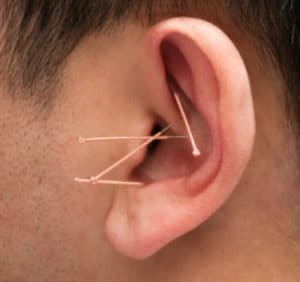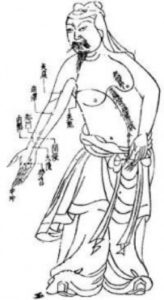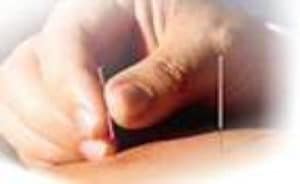Acupuncture has been around for centuries and has spread to most parts of the world. As audiologists, we hear of the procedure, maybe even know patients who undergo the procedure, but don’t hear much about the specifics of how it is conducted or of its actual benefits. The procedure has been credited as a treatment for many diseases, including asthma, back pain, carpal tunnel syndrome, fibromyalgia, mild headaches, migraine headaches, osteoarthritis, sciatica, stroke, and nausea. Some have even claimed that acupuncture can cure deafness and hearing loss. Such claims are of interest to audiologists. We ask, does it really work for the treatment of hearing impairment or is it a scam?

For the next couple of weeks, Hearing International will look at the evidence of how and if this procedure could possibly be of benefit as a treatment for hearing impairment. Before we can understand its benefits or non-benefits, it’s necessary to take this week to look at what acupuncture really is, where it came from, and how it works.
According to Sciamarella (2011), acupuncture is just one of the elements that make up traditional Chinese medicine. Traditional Chinese medicine (TCM) is a combination of physical, mental, and spiritual practices that include techniques such as massage therapy and acupuncture, along with herbal medicine and various forms of mind-body exercise. The American Academy of Medical Acupuncture (2011) defines the procedure as a method of encouraging the body to promote natural healing and to improve functioning. Acupuncture involves inserting needles and precisely applying heat or electrical stimulation at acupuncture points.
In the United State and many other countries acupuncturists are independently licensed healthcare practitioners. Often physicians who obtain additional training and qualification in acupuncture are allowed to perform acupuncture within the scope of their license to practice medicine.
Where Did Acupuncture Come From?

Sciamarella (2011) reports that the earliest known source of information on acupuncture comes from a text called the Huang Di Nei Jing, or Yellow Emperor’s Inner Classic, which is believed to have originated as early as the second century BC. Fundamentally, the Nei Jing regarded the human body as a miniature representation of the universe as a whole and taught that a state of health could be achieved by balancing the body’s internal environment with the external environment of the entire universe. Sciamarella further says that the earliest European reports of acupuncture come from Jesuit missionaries in the 16th and 17th centuries and the word acupuncture was actually coined by French Jesuits, from the Latin acus (needle) and punctura (puncture).
It is also widely believed that acupuncture may have actually been very familiar to ancient Europeans. The mummified remains of the so-called “Austrian Iceman,” who is now known as Oetzi, were found in the Italian Alps in 1991. The mummy is believed to be over 5,000 years old. A series of tattoos was discovered on Oetzi’s body, which correspond to the locations of traditional acupuncture points still in use today.
Currently, it is estimated that about 8,000 nonphysicians and 1,500 physicians are practicing acupuncture in the United States. ICART (2011) suggests that internationally there are over 80 societies and 30,000 physicians that practice acupuncture.
How does Acupuncture work?
Believe it or not there is a web site called “www.howdoesacupuncturework.com,” which offer two general descriptions of how acupuncture works. One is the traditional Chinese medicine discussion and the other is the western scientific explanation.

Traditional Chinese Medicine (TCM) is an integrated system, which has been used for thousands of years to treat injury and illness. Acupuncture forms one of the key components to the TCM approach to curing disease and disorders of the body. HDAW (2011) describes the TCM system of medicine as the body having a delicate balance of two opposing and inseparable forces: Yin and Yang. The Yin represents the cold, slow, or passive principle, while the Yang represents the hot, excited, or active principle. TCM likens the human body to a highly complex electrical circuit. Like any electrical circuit it must be kept in good working order if it is to function effectively; if the circuit breaks down, the result is illness.
Among the major assumptions in TCM are that health is achieved by maintaining the body in a “balanced state” and that disease is due to an internal imbalance of Yin and Yang. This imbalance leads to blockage in the flow of qi (pronounced “chee”, meaning vital energy) along pathways known as meridians. TCM theorizes that it is essential for qi, as well as blood, to circulate in a continuous and unobstructed manner for good health of the mind and body. Acupuncture meridians or channels are the pathways through which the energy flows throughout the body. Acupuncture points lie along the meridians and are the holes that allow entry into the acupuncture meridians. The acupuncture points provide gateways to influence, redirect, increase, or decrease body’s vital substances, qi (energy) & blood, thus correcting many of the body’s imbalances. The theoretical concepts on which Traditional Chinese Medicine is based can be divided into 5 areas. These can be summarized as:
- I. Philosophical – The Yin & Yang Theory & the 5 Element Theory
- II. Morphological – Zang Fu (Organ) Theory, Meridian Theory & Theory of Fundamental Substances.
- III. Pathological – Theory of Exogenous Pathogenic Factors & Theory of Internal Pathology from imbalances in Yin & Yang caused by lifestyle or emotions.
- IV. Diagnostic – Observation, Questioning, Palpation
- V. Therapeutic – Needling techniques, Moxibustion & Herbs.

Western Scientific Explanation (WSE) – Acupuncture was introduced into western medicine in the 1950s and 60s and has gradually become more accepted, as research has shed light on the mechanisms underlying its effects on the human body. Currently, there is no single Western scientific theory that explains all of the physiological mechanisms underlying the effects of acupuncture. This is because acupuncture has a variety of therapeutic effects on the body, thus the action varies by the pathology involved. According to HDAW (2011), it is proposed that acupuncture primarily produces its effects through regulating the nervous system, which aids in the activity of pain-killing biochemicals such as endorphins and immune system cells at specific sites in the body.
Additionally, studies have shown that acupuncture may alter brain chemistry by changing the release of neurotransmitters and neurohormones. These affect the parts of the central nervous system related to sensation and involuntary body functions, such as immune reactions and processes that regulate a person’s blood pressure, blood flow, and body temperature. In summary, scientists have deduced a number of theories from observing individual clinical effects of acupuncture treatment (HDAW, 2011). These theories and the observed clinical effects on which the theories are based can be summarized as the following:
- Augmentation of Immunity Theory – Increased Immune Function & Resistance to Disease
- Endorphin Theory – Reduction of Pain
- Neurotransmitter Theory – Inflammation Reduction & Promotion of Feelings of Well Being
- Circulatory Theory – Improved Circulation & Smooth Muscle Relaxation
- Gate Control Theory – Increased Pain Tolerance
- Motor Gate Theory – Hasten Motor Recovery from Paralysis
- Homeostatic or Regulatory Effect – Regulation of Body’s Homeostasis to Disease or Abnormal Conditions
- Bioelectric Theory – Stimulation of cells of tissue growth & repair
- Nervous System Theories – Central nervous system, spinal & peripheral nerve stimulation, resulting in some of the above-mentioned effects.
Thus, there are both scientific and traditional Chinese medicine explanations as to how the procedure works. Watch for next week’s Hearing International to see our deduction as to whether or not acupuncture is able to reduce or cure hearing impairment – RMT
References:
American Academy of Medical Acupuncture (2011). Retrieved November 7, 2011: http://www.medicalacupuncture.org/acu_info/articles/aboutacupuncture.html
How does acupuncture work.com (HDAW) (2011). Traditional Chinese Medicine – Western Scientific Explanation. Retrieved November 7, 2011: http://www.howdoesacupuncturework.com/category/traditional-chinese-medicine/
International Council of Acupuncture and Related Techniques (ICART) (2011). Home Page. Retrieved November 7, 2011: www.icmart.
Sciammrella, J., (2011). Medical Accupuncture. eMedicinehealth.com. Retireved November 7, 2011: http://www.emedicinehealth.com/medical_acupuncture/page4_em.htm#Acupuncture Physiology
Reprinted with permission from hearinghealthmatters.org.
Please visit http://hearinghealthmatters.org/ for the original article: Acupuncture and Hearing Loss…does it Really work? Part I
Copyright 2011.